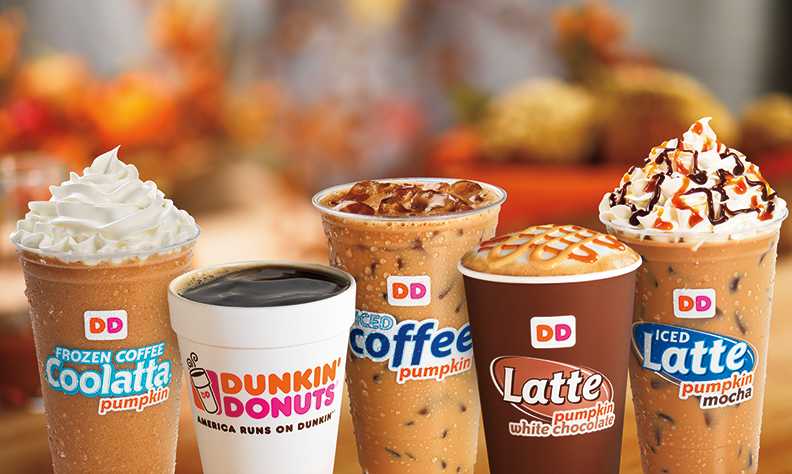Dunkin’ Brands Group, Inc., the parent company of Dunkin’ Donuts (DD) and Baskin-Robbins (BR), yesterday reported results for the second quarter ended June 25, 2016.
“We are pleased that we were able to grow both operating income and earnings per share at a significantly faster pace than revenue in the second quarter,” said Dunkin’ Brands Chairman and Chief Executive Officer Nigel Travis.
“As for our five-part plan designed to drive Dunkin’ Donuts U.S. comparable store sales growth, while we are still in the early phases of implementation and have not yet seen an acceleration of top-line sales, we are making significant progress with our initiatives.
We are especially delighted with our efforts to continue to build our coffee authority, as evidenced by the second quarter growth in our espresso category and the launch of our Cold Brew coffee, and we continue to improve the guest experience through digital technologies like On-The-Go mobile ordering that enables DD Perks members to order in advance and skip to the front of the line.”
“Consistent with our asset light-business model we are selling many of our company-owned stores, the majority of which are in the Dallas market, and as a result, are updating our revenue growth target for 2016 to three to five percent from four to six percent.
We’re pleased to have new and existing franchisees taking over this important market and look forward to the next phase of growth in Texas. We anticipate that by the end of the year, we will have fewer than 5 company-owned stores remaining,” said Paul Carbone, Chief Financial Officer, Dunkin’ Brands Group, Inc.
“While the sale of these stores impacts our revenue growth, we do not anticipate that there will be a material impact to our profits. Therefore, we are reaffirming all of our other targets for our 2016 performance.”
Second Quarter 2016 Key Financial Highlights
Global systemwide sales growth in the second quarter was primarily attributable to global store development and Dunkin’ Donuts U.S. comparable store sales growth (which includes stores open 78 weeks or more).
Dunkin’ Donuts U.S. comparable store sales growth in the second quarter was driven by increased average ticket offset by a decline in traffic. Growth was driven by strong beverage sales, led by iced coffee and hot and iced espresso-based beverages, and breakfast sandwiches, led by the GranDDe Burrito and the Bacon Supreme Omelet breakfast sandwich.
Baskin-Robbins U.S. comparable store sales growth was driven by increased average ticket offset by a decline in traffic. Growth was driven by sales of cups and cones led by the new Warm Cookie Ice Cream Sandwich.
In the second quarter, Dunkin’ Brands franchisees and licensees opened 198 net new restaurants around the globe.
This included 78 net new Baskin-Robbins International locations, 73 net new Dunkin’ Donuts U.S. locations (including the closing of 9 Speedway self-serve coffee stations), 35 net new Dunkin’ Donuts International locations, and 12 net new Baskin-Robbins U.S. locations.
Additionally, Dunkin’ Donuts U.S. franchisees remodeled 107 restaurants and Baskin-Robbins U.S. franchisees remodeled 36 restaurants during the quarter.
Revenues for the second quarter increased 2.3% compared to the prior year period due primarily to increased royalty income as a result of systemwide sales growth and an increase in other revenues due primarily to increased license fees recognized in connection with the Dunkin’ K-Cup® pod licensing agreement and an increase in transfer fee income.
These increases in revenues were offset by a decrease in sales at company-operated restaurants driven by a net decrease in the number of company-operated restaurants, as well as a decrease in sales of ice cream and other products. As of June 25, 2016, there were 29 points of distribution that were company-operated.
Operating income and adjusted operating income for the second quarter increased $13.6 million, or 14.6%, and $8.3 million, or 8.1%, respectively, from the prior year period primarily as a result of the increases in royalty income and other revenues, offset by a decrease in net margin on ice cream and other products from international markets.
Additionally, operating income in the prior year period was unfavorably impacted by costs incurred related to the final settlement of our Canadian pension plan as a result of the closure of our Canadian ice cream manufacturing plant in fiscal year 2012.
Net income and adjusted net income for the second quarter increased by $7.3 million, or 17.2%, and $4.1 million, or 8.5%, respectively, compared to the prior year period primarily as a result of the increases in operating income and adjusted operating income of $13.6 million and $8.3 million, respectively, offset by an increase in income tax expense.















